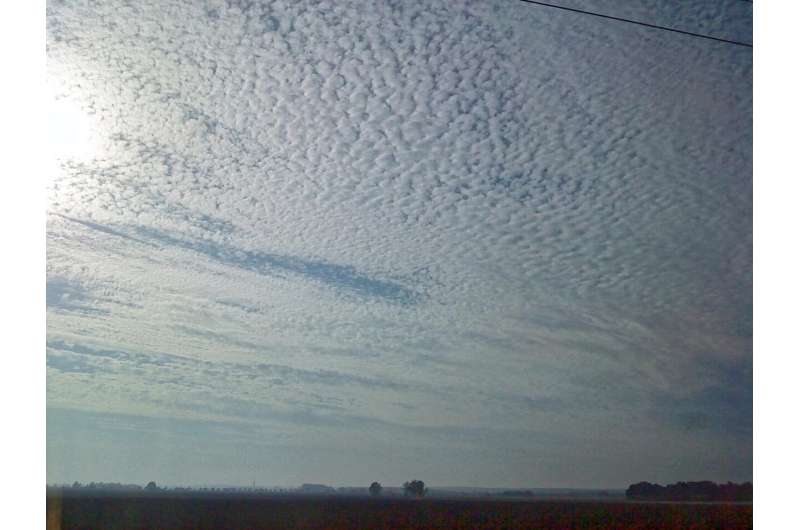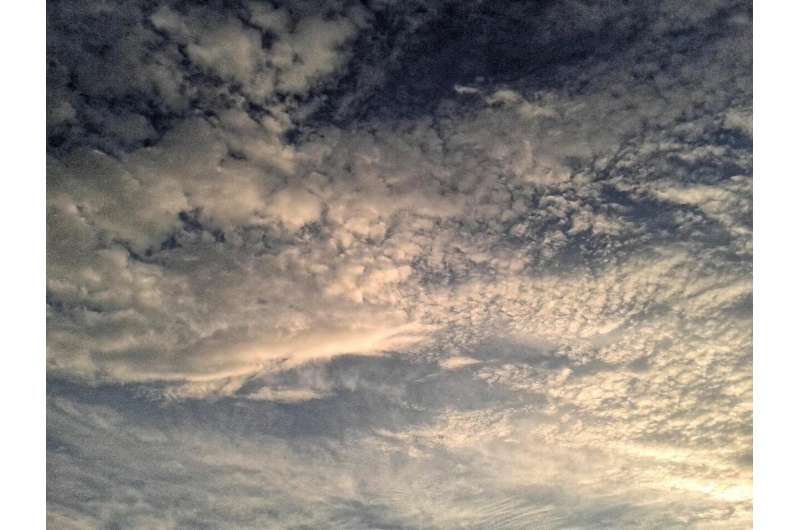Turbulence creates ice in clouds

Vertical air motions increase ice formation in mixed-phase clouds. This correlation was predicted theoretically for a long time, but can now be observed for the first time in nature. This research was published by a team from Leibniz Institute for Tropospheric Research (TROPOS) in Leipzig in npj Climate and Atmospheric Science, an open access journal published by Nature Research.
Using laser and radar equipment, the team measured vertical air velocity and ice formation in thin mixed-phase clouds. Such clouds contain ice particles, water vapour as well as supercooled liquid droplets. The results from Leipzig could help to map an important part of the water cycle better in the weather and climate models in the future by ice formation in clouds.
The formation of ice in clouds is a core element of the water cycle on Earth. It is usually difficult to isolate the ice formation process in order to study it individually because the interaction of aerosol particles, air motion and microphysical processes in clouds is too complex. Nevertheless, it is necessary to understand these processes in detail in order to better map this mechanism in weather and climate models.
The cloud researchers concentrated on a less spectacular and therefore less considered form of clouds in order to exclude other processes than primary ice formation. They investigated large cloud fields at an altitude of about 2 to 8 kilometres with a vertical extent of only 100 to 200 metres and which contained extremely little ice in the range of micrograms per cubic meter. Such thin clouds allow both ice to be detected with a cloud radar and the vertical air movement with a Doppler lidar, as the laser beam can still penetrate the clouds. Both lidar and radar instruments were therefore necessary to investigate the turbulence and ice formation in these clouds above Leipzig from the ground.

"The effect only became visible when we observed the ice directly below the clouds' top layer. Our findings enable for the first time quantitative and well constrained insights into the relationship between turbulence and ice formation in the atmosphere. The stronger a cloud is 'shaken' by vertical air motions, the more ice falls out of it," reports Dr. Johannes Bühl of TROPOS. This correlation was measured for clouds colder than -12 °C. Next, the remote sensing scientists want to explore the influence of aerosols by taking a closer look at the beginning (ice nucleation) and end (precipitation of ice particles) of the ice formation process.
Ice formation in clouds is an important process in the atmosphere, because without this ice practically no precipitation would fall from clouds in the middle latitudes of the Earth. As far-reaching as these processes may be, many details have not yet been sufficiently understood and are therefore not taken into account in the weather and climate models.
More information: Johannes Bühl et al, Impact of vertical air motions on ice formation rate in mixed-phase cloud layers, npj Climate and Atmospheric Science (2019). DOI: 10.1038/s41612-019-0092-6
Provided by Leibniz Institute for Tropospheric Research (TROPOS)





















